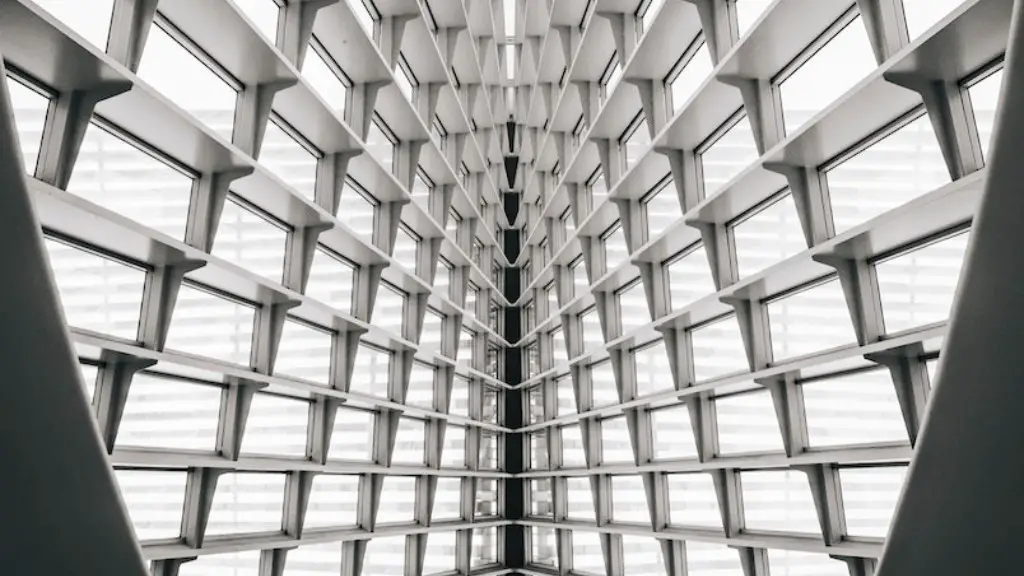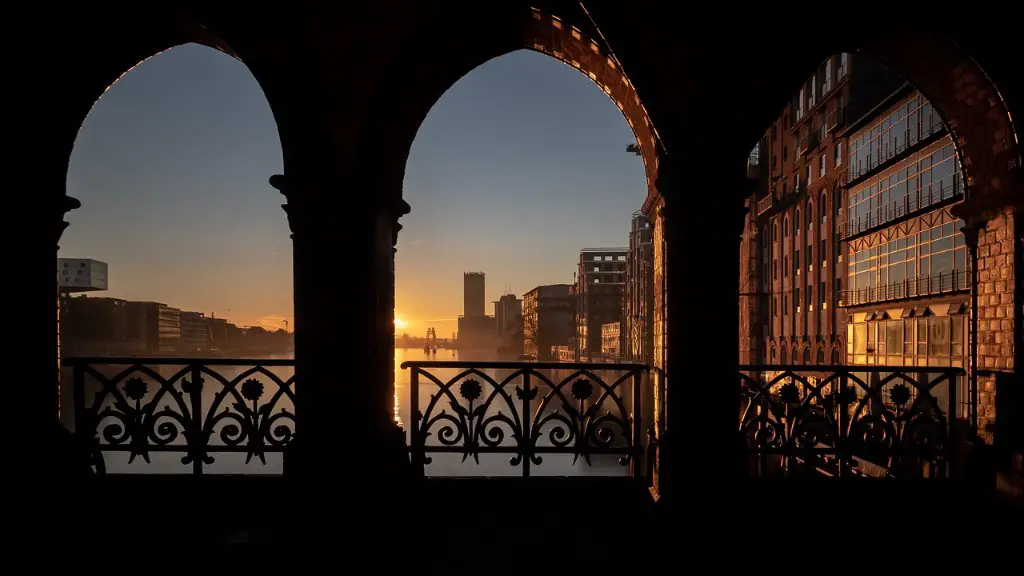It has become increasingly important to prioritize sustainability in architecture in recent years, as the effects of climate change become more and more evident. Sustainability means different things to different people and the term is broadly applied to systems that support the preservation of resources and the environment. In terms of architecture, it encompasses the enactment of design strategies, processes, and practices that reduce the negative impact of building projects on the environment. By better understanding the implications of sustainability in architecture and how each decision can affect the future, not only our daily lives, but also the planet, we can be empowered to create an environment that is both friendly and beneficial to the world.
The effect of sustainability on architecture is two-fold. On one hand, it is critical to maintain architectural integrity to have a successful building. Different materials, style, furniture, and other pieces of design should fit together harmoniously. On the other hand, designers must also prioritize the environment and the resources used in building. These resources are finite and so sustainability ensures that the resources used are not wasted and the environmental impact of the building’s creation is minimal. Achieving that balance between design and sustainability within a construction project is important, and creates a much more comfortable, healthy living experience for present and future generations.
When considering sustainability, architects typically look at energy, waste, and materials used. These include elements of energy efficiency, passive design, thermal performance, renewable energy use, and so on. Some of the most common solutions for making a building more sustainable are incorporating natural daylight, natural ventilation, low energy lighting, and low carbon construction materials. These solutions may cost a bit more upfront, but the long-term benefits, such as reduced energy costs, are worth it. Additionally, architects are also looking into ways to reduce waste and reuse materials, designing buildings to be more flexible and adaptive, and even using technology to monitor and adjust settings.
Architecture isn’t just about making buildings; it’s about designing structures and structures that will be enjoyed for decades, if not centuries. Many architectural projects are built to last, which is why it is essential to incorporate sustainable designs into every construction. Sustainability isn’t only important in architecture as a way to protect the environment; it is also important from an economic standpoint. Sustainable living means that energy and other resources are conserved, resulting in long-term savings and reduced costs. Ultimately, it is in everyone’s best interest to incorporate sustainability into the design process of any new project to ensure that the most efficient and beneficial solutions are implemented.
The future of architecture is becoming increasingly focused on sustainability. Architects and designers are continuing to look for ways to use renewable resources, reuse materials, and create energy efficient buildings. As technology advances, so too do the opportunities for more sustainable designs, from net-zero energy consumption and water efficient systems, to more efficient cooling and heating solutions. This is an ongoing effort, and the more we practice sustainable design and construction methods, the better off we will be in the future.
Landscape Sustainability
Landscape sustainability is becoming increasingly important to architecture, as gardens and green spaces help reduce energy costs and make cities more livable. Incorporating elements of landscape design into buildings is a great way to reduce energy consumption and create long-term savings. Utilizing plants, trees, and other vegetation to cool the building through shade and reflect light away from the building will reduce the amount of energy needed to cool it during the hot summer months. Additionally, green roofs have been proven to reduce the amount of heat lost in the winter months, resulting in less energy use overall.
When landscape sustainability is applied to buildings, it can also create a stronger connection between the building and its environment. This helps to create an aesthetic that people can appreciate, and it also supports the idea of creating green spaces within the built-up city environments. By incorporating elements of nature into the building design, not only are we reducing energy costs and preserving resources, but we are also making the environment that much more enjoyable for all.
Environmental Impacts
There are numerous environmental implications of architecture and the way it is designed. Sustainability plays an important role here, as buildings need to be designed in harmony with their environment. This includes taking into consideration the impact on the local flora and fauna, and how the building will be able to withstand the elements, such as extreme heat, cold, and wet climates. When planning and constructing a building, it is also important to try to conserve as much of the existing environment as possible, and to minimize the amount of waste and materials needed to construct the building.
Integrating sustainability into the design process is also critical to all the other aspects of construction. This means, that the use of materials, the amount of pollution and emissions that go into creating a building, the overall size of the structure, and even the amount of energy it uses; all need to be closely considered and managed to ensure the greatest amount of sustainability. All of these considerations help to reduce the total impact of the building on the environment.
Technological Opportunities
Sustainability isn’t just about the materials and resources we use to build a building, but also about the way these materials are integrated and put together. Technology offers immense opportunity when it comes to sustainability in architecture, as it has the power to monitor energy use, measure the performance of the building, and adjust conditions depending on the environment it is in. Smart technology can be used to measure lighting, heating, cooling and more, allowing architects to create buildings that are more energy efficient and less damaging to the environment.
Other technological advances that are often used in sustainable architecture include rainwater harvesting, solar energy, and wind energy. From green walls to smart glass, sustainable designs are ever evolving and being pushed further with the help of technology. With the current rate of advancement in technology, there is no telling what will be possible in the future. The possibilities for sustainable architecture are endless and if we continue to push the limits of design, then there may be an incredible amount of resource conservation and pollution reduction in the years to come.
Education on Sustainability
As with any concept, it is important to be educated on sustainability and its implications for the environment in order to understand why it is important. To that end, many universities and design schools provide architectural courses focused on sustainability and the environment, as well as seminars and resources. Additionally, there are organizations, such as the Sustainable Design Organization, that are dedicated to promoting and advancing sustainable design, and provide resources to those interested in the concept.
The importance of education in terms of sustainability cannot be overstated. By understanding the implications of our actions and the effects they can have on the environment, we can be empowered to make conscious decisions that are beneficial to not only ourselves but also the planet. Similarly, by being educated on the implications of sustainability in architecture and the importance of preserving resources and protecting the environment, we can make sure that our building projects are contributing to the greater good.
Reconciliation with nature
Sustainability in architecture has the power to not just reduce the environmental impact of a building, but to also create a deeper connection between the building and its surroundings. By incorporating elements of nature, such as natural lighting and ventilation, vegetation, and green designs, we can connect with the environment on a more personal level. This connection is created through a respect and appreciation of the environment and its resources, allowing us to foster an appreciation of the environment that has been largely diminished due to the industrialized nature of our society.
This enhanced connection with the environment can be beneficial to not only us, but to the environment as well. By understanding our place in the natural world, we are able to better understand the impacts our actions have on the environment and strive to create a more just and equitable world. Similarly, this connection with nature allows us to create designs that respect and preserve the environment, instead of harm it.
Innovative Solutions
As the importance of sustainability in architecture becomes increasingly evident, so too does the need for innovative solutions. Architects and designers are continuously looking for new ways to use resources more efficiently and reduce the environmental impact of buildings. From innovative materials to cutting-edge building designs and automated systems, architects and designers are constantly striving to create more sustainable and efficient solutions for construction projects.
Whether it’s through the use of prefabrication, energy efficient cooling and heating systems, or smart technology, these innovative solutions provide a cleaner and more efficient way to build. By pushing the boundaries of design and technology, architects and designers have the potential to not only create designs that are more sustainable, but also designs that are more efficient and economical in the long run.
Sustainability in architecture is no longer just a “nice-to-have”; it is a necessity in order to protect the environment and create a better future. By understanding the implications of sustainability and the importance of preserving resources and reducing emissions, we can create an environment that is both friendly and beneficial to the world. Architects and designers should remain committed to incorporating sustainable design into every project and use innovative solutions whenever possible to ensure that future generations can enjoy the same comforts and opportunities that we do.




